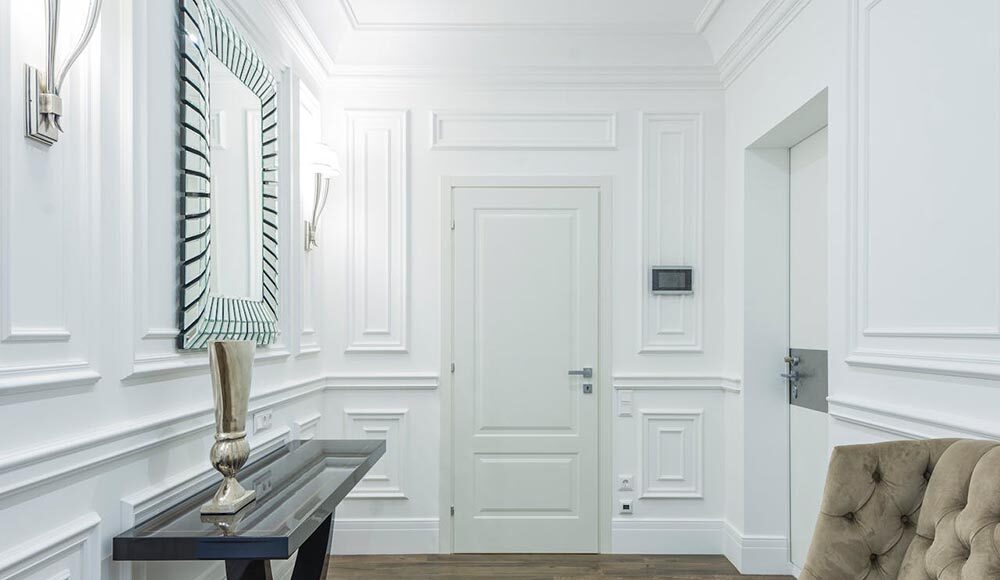Wall paneling offers a versatile and decorative way to enhance the interior of any room. From traditional wainscoting to modern 3D panels, the different types of wall paneling can transform a space.
Understanding the various materials, styles, and installation methods allows homeowners and designers to select the perfect wall paneling to meet their aesthetic and functional needs.
Overview of Types of Wall Paneling
What is Wall Paneling?
Wall paneling refers to decorative wall coverings made from different materials like wood, MDF, or PVC panels. It is installed on the lower or entire wall to add texture, style, and protection. These panels can serve decorative purposes, improve the acoustics of a room, or act as an accent feature. Wall paneling can significantly alter the look and feel of a space, making it a popular choice for remodel projects and new constructions.
Common Types of Wall Paneling
Various types of wall paneling are available, each offering unique benefits. Understanding these types helps in choosing the best option for specific design needs.
Benefits of Using Wall Panels
Wall panels offer numerous benefits beyond aesthetics, including improved acoustics, insulation, moisture resistance, and easy maintenance.
Materials Used in Wall Paneling
PVC Wall Panels
PVC wall panels are popular for moisture-prone areas due to their water resistance, durability, and ease of cleaning. These panels are also lightweight and simple to install, making them a suitable material for DIY projects. They come in a variety of finishes and styles, offering a versatile way to enhance the look of a room.
MDF Wall Panels
MDF wall panels are a cost-effective alternative to solid wood, offering a smooth surface for painting. MDF panels are commonly used for wainscoting, decorative wall paneling, and other interior applications. While MDF is versatile and easy to work with, it is important to ensure it is properly sealed and protected from moisture to prevent damage.
Fabric Wall Panels
Fabric wall panels add texture and sound absorption to a space. These panels consist of a fabric covering stretched over a core material, creating a soft and inviting surface. Fabric panels are often used in home theaters, bedrooms, and offices to improve acoustics and reduce echo. They come in a wide range of colors, patterns, and textures, allowing for endless design possibilities. Professional installation is often recommended for fabric panels to ensure a seamless and visually appealing finish.
Decorative Wall Paneling Options
Types of Decorative Wall Panels
Different types of decorative wall paneling can dramatically alter the interior of any room. Decorative wall panels range from traditional paneling like wainscoting to modern 3D panels that serve as a focal point. The materials can vary widely, including wood, MDF, PVC, and even fabric. Each type of wall panel offers a unique aesthetic and functional benefit, making it versatile for various design style preferences and practical needs within a space.
Choosing the Right Decorative Panel
Choosing the right decorative wall panel requires careful consideration of several factors. First, assess the room’s style and desired texture. Wood wall paneling offers a traditional, warm feel, while PVC panels are ideal for bathrooms or kitchens due to their resistant nature. Consider the acoustics if you have a space for watching movies, and panels absorb sound. Think about the ease of installation – some types of wall paneling are DIY-friendly, while others might require professional installation.
Trends in Decorative Wall Paneling
Current trends in decorative wall paneling lean towards incorporating texture and visual interest. 3D panels are gaining popularity as accent wall features, adding depth and dimension to a space. Sustainable building materials, like reclaimed wood wall paneling or MDF made from recycled wood, are also in demand. Moreover, incorporating fabric wall panels for enhanced acoustics in living rooms and bedrooms is a growing trend. These trends allow for creating unique and personalized interior designs.
Installation of Wall Panels
Preparing for Installation
Before starting the installation of any wall panel, proper preparation is crucial for a successful outcome. Start by cleaning the wall surface to ensure it is free from dust, dirt, and any loose paint. Measure the wall accurately to determine the number of panels needed, accounting for any cuts or adjustments. Gather all necessary tools, including a level, measuring tape, saw, adhesive, and safety gear. Proper preparation saves time and ensures a professional finish for your decorative wall paneling.
Step-by-Step Installation Process
The installation process varies depending on the type of wall paneling chosen. For tongue and groove panels, start by attaching the first panel to the wall, ensuring it is level. Use adhesive or nails to secure it. Continue adding panels, interlocking the tongue and groove edges. For MDF or PVC panels, apply adhesive to the back of the panel and press it firmly against the wall. Ensure each panel is aligned properly. For professional installation of fabric panels, it usually entails a specific framework for better acoustic properties.
Maintenance Tips for Wall Panels
Maintaining your wall panels ensures they retain their beauty and functionality for years to come. For PVC panels, simply wipe them down with a damp cloth to remove dirt and grime. Wood wall paneling may require occasional polishing or staining to protect the natural wood finish. Fabric wall panels can be vacuumed regularly to remove dust and prevent stains. Avoid using harsh chemicals or abrasive cleaners on any type of wall paneling, as they can damage the surface. Regular maintenance helps in preserving the decorative appeal of your interior space.
Acoustic Wall Panels
What Are Acoustic Wall Panels?
Acoustic wall panels are decorative wall coverings designed to absorb sound waves and reduce noise levels within a space. These panels are typically made from materials such as fabric-wrapped fiberboard, foam, or wood. The primary goal of installing acoustic wall panels is to improve the acoustic properties of a room, making it more comfortable and functional for various activities. They are versatile and can be used in a variety of settings, from offices and home theaters to classrooms and recording studios.
Benefits of Acoustic Paneling
The benefits of using acoustic wall paneling extend beyond just noise reduction. These panels significantly improve the acoustics of a room, reducing reverberation and echo, which results in better speech intelligibility and a more pleasant listening experience. In addition to their functional benefits, acoustic wall panels also offer aesthetic advantages. They are available in a wide range of colors, textures, and styles, allowing them to complement the existing interior design. Acoustic panels can enhance both the sound quality and the visual appeal of a space.
Where to Use Acoustic Panels
Acoustic panels are highly versatile and can be used in various settings to improve acoustics. In offices, they help reduce noise distractions, creating a more productive work space. Home theaters benefit from enhanced sound clarity, while recording studios achieve optimal sound quality. Classrooms can use acoustic wall paneling to reduce echo, improving speech intelligibility for students. Restaurants and cafes can create a more relaxed atmosphere by minimizing noise levels. Acoustic panels are also beneficial in bedrooms for better sleep, and high-traffic areas where noise reduction is essential.
Choosing the Right Type of Wall Panel
Factors to Consider
Key factors to consider when selecting wall panels include the intended purpose (decorative, acoustic, moisture resistance), room style, ease of installation, maintenance, and budget.
Matching Panels with Interior Design
Matching wall panels with interior design is crucial for creating a harmonious space; for example, wainscoting for traditional styles and 3D panels for modern interiors.
Cost Considerations for Wall Paneling
Cost considerations include material, size, installation complexity, and long-term benefits such as acoustics and property value. PVC and MDF are generally more affordable, while DIY installation can save on labor costs.
##





